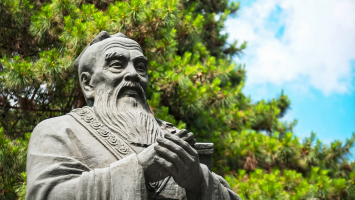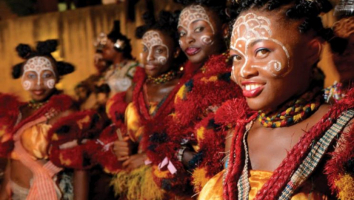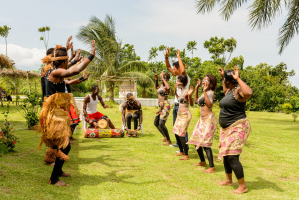Top 9 Most Famous Helmets In Ancient Rome
The Roman Empire was one of the longest-lasting and most militarily robust. Roman soldiers were heavily equipped and armored, especially when compared to their ... read more...enemies. Roman armor underwent tremendous alteration throughout the ages as a result of new problems, technology, and trends. Roman helmets were made in huge numbers and represented these changes. Roman helmets still in existence range in complexity from the incredibly modest to the incredibly extravagant. Here are some of the most famous helmets in Ancient Rome that you should know.
-
Early Roman helmets frequently took inspiration from diverse Italiotes, Etruscans, and other inhabitants of the Italian Peninsula for their designs and aesthetics. This makes it challenging to distinguish and categorize distinctively Roman helmets from the Roman Kingdom and the Early Republic.
However, assuming that Roman soldiers did not wear helmets during those times would be incorrect. This indicates that the Montefortino type is the first style of Roman helmet that can be easily recognized as such. It was created by the Celts, just like many other kinds of Roman helmets. Around 300 BCE, this helmet first entered usage, and it remained in use until the first century CE. The Montefortino helmet is just one example of the many instances of military piracy, and it was the most famous helmets in Ancient Rome which were one of their biggest advantages.
The original Montefortino helmets, so named after the Italian region where they were originally discovered by contemporary archaeologists, were worn by the Celts. Between 300 BC and 100 AD, it was in use, particularly during the Pyrrhic Wars and in opposition to Hannibal's powerful Carthaginian troops.
Though some variations are more conical, it is a straightforward design—a globe split in half. In other circumstances, the helmet's top knob may have served as the anchor for decorations like plumes. The shelf that extends from one side of the helmet is a neck guard rather than a peak. There aren't many cheeks or face protectors left, but holes for fastening them are still present; they might have been made of less sturdy materials.
The helmet was a valued possession for the Celts who invented it, and each one was personally designed and fashioned. Roman specimens can be recognized for their lack of aesthetic appeal because they were mass-produced from brass and engineered to be both efficient and affordable.

Photo: Wikipedia 
Photo: ArtStation -
The Coolus Roman helmet was of Celtic descent, just like the Montefortino helmet, to which it bears a resemblance. Both helmets were probably used by the Romans because of their straightforward designs, which allowed for inexpensive mass production. This was crucial at the time since numerous Roman citizens were required to serve in the military. The Coolus style is thought to have been in use from the third century BCE until the first century CE. It was most frequently used during Caesar's Gallic Wars (58–50 BCE), presumably as a result of the Romans' extensive usage of Celtic armorers at this time.
Roman helmets in the Coolus type were typically composed of bronze or brass, however, it's conceivable that some were also constructed of iron. They weren't conical; they were globular or hemispherical. A neck guard and a turned, cast-soldered, or riveted-on crest knob were further features of these Roman helmets. They were punctured, like the majority of Celtic-style helmets, to accommodate ties or cheek guards. The only ornamentation on this largely plain Roman helmet was a few raised panels or ridges on the cheek guards.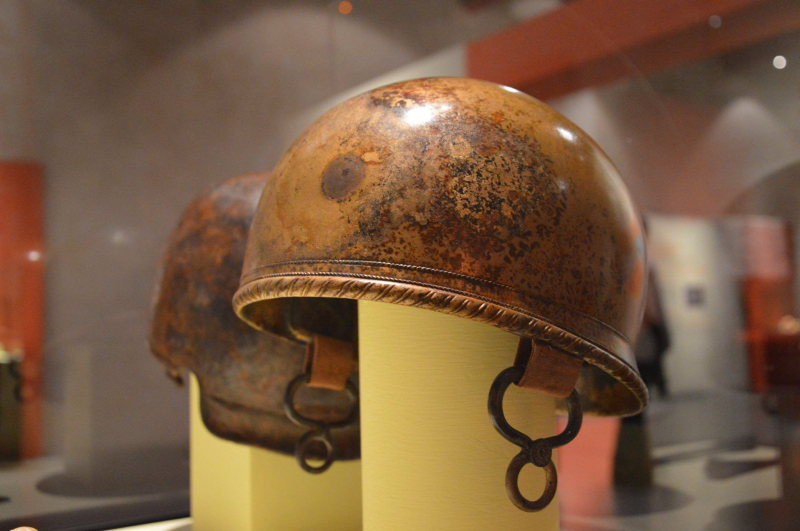
Photo: Pinterest 
Photo: ArtStation -
Another illustration of Celtic influence on Roman armor is the Agen style. They were in use between around 100 BCE and 100 CE, or the Late Republic and Early Imperial eras of Roman history. Their use of iron as opposed to brass or bronze distinguishes them from other Roman helmets of the time. Other than that, they look pretty much like the Coolus style. The development of iron helmets is credited to the Celts, who were renowned metalworkers in antiquity. Only a few Roman helmets in the Agen design are known to have endured into the present and these are some of the most famous helmets in Ancient Rome.
The cheek guards and steep sides of the Agen type have flattened tops and steep sides. The helmet had a triangular sectioned horizontal rib all the way around the bowl, and it had a narrow brim that flared out in the back to form a neck guard that was embossed with two shallow, semicircular steps. This rib may have increased the helmet's rigidity or even improved ventilation, according to certain theories. A pair of straightforward, recurved, embossed eyebrows were present over the front of the bowl; these would subsequently become a design element common to all helmets. On each side of the helmet, there are two rivets that secure the cheek guards in place.

Photo: www.thecollector.com 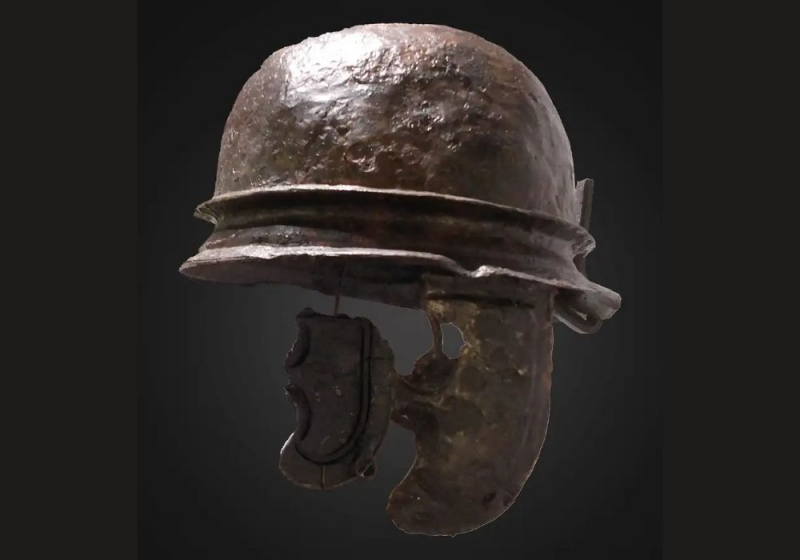
Photo: www.thecollector.com -
Although they don't initially look alike, the Port style and the Agen style are highly comparable. They were in use from around 100 BCE to 100 CE, during the Late Republic and Early Imperial eras of Roman history, and they also clearly display a Celtic influence. They resemble the Coolus style of the Roman helmets in terms of aesthetics, albeit the Port style is noticeably more "Roman" than the Agen style. They were fashioned of iron rather than bronze or brass, just like the Agen helmets. Only a few Roman helmets in the Port design are known to have endured till the present day.
The Port and Agen styles don't instantly look alike, yet they both had aspects that would subsequently become commonplace in other designs. Both types of helmets have cheek protection and a deep, circular bowl shape with flattened tops and steep edges. The Port style of helmets has a bowl that extends downward at the back and has two noticeable embossed ridges. Along the front of the helmet, they have a pair of straightforward, recurved eyebrows that are embossed. The Port Type, however, has a more pronounced neck guard and a less pronounced brim than the Agen style.

Photo: www.thecollector.com 
Photo: www.thecollector.com -
Following Caesar's Gallic Wars (58–50 BCE), Roman army men began wearing iron helmets on a large scale. Rome now had unrestricted access to the area's Celtic Armorers as a result of its conquest of Gaul. As a result, the Imperial kind of Roman helmet—which is further divided into Imperial Gallic and Imperial Italic—was created. The Late Republic witnessed the first appearance of the Imperial Gallic Roman helmet, which was in use until the third century CE. It was initially a cross between the Agen and Port styles, incorporating elements from each.
The bowl is circular, has a flat top, and has straight sides in the Imperial Gallic design. Additionally, they have noticeable cheek guards made of iron. The semi-circular embossing on its neck guard, which acts to strengthen rigidity and creates a suspension ring on the lower surface, was inspired by the Agen design. It borrowed its two raised occipital ridges, which are located above the neck guard's outer flange and the embossed "eyebrows" on the front of the helmet, from the Port style. Imperial Gallic Roman helmets also have a substantial, distinctively designed reinforcing peal at the front of the helmet. Some helmets additionally have two iron bars that are riveted crosswise on the top, serving as a type of reinforcement.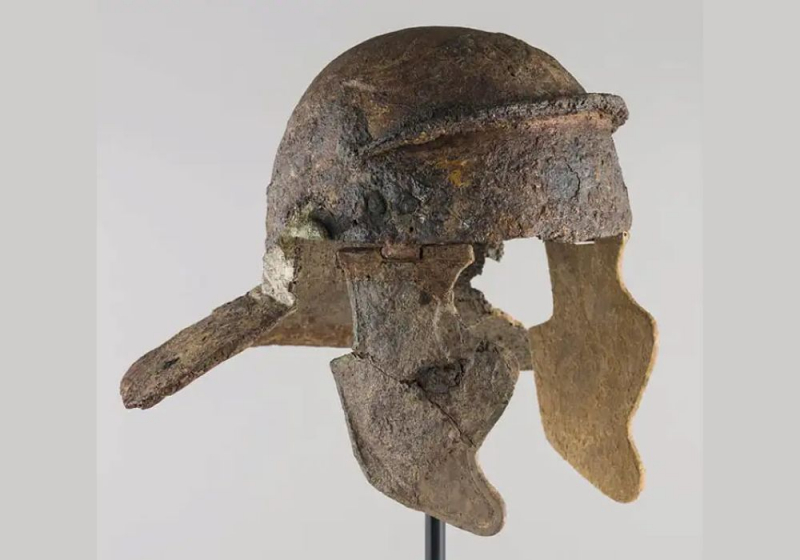
Photo: www.thecollector.com 
Photo: www.thecollector.com -
The Imperial Italic is the name given to the second Imperial form of the Roman helmet because of the pronounced and powerful Italic influences in its style and appearance. These helmets were probably created in Italian workshops that combined elements from Italian and Greco-Etruscan traditions. The Imperial Italic helmet was initially developed during the Late Republic and was in use until the third century BCE, much like the Imperial Gallic Roman helmet. This is one of the famous helmets in Ancient Rome also. The Imperial Italic is typically linked to officers in the Modern Era such as Centurions and the Praetorian Guard. It is unclear, though, whether they were worn as a mark of status or if this was simply a reflection of the soldiers' superior purchasing capacity.
The Imperial Italic and Imperial Gallic styles are fairly similar in terms of overall appearance. However, these helmets also share a number of characteristics with the Greek helmets used in Attica between the fourth and third centuries BCE. The reinforcing peaks, the circular plate twist on crest fastening, the absence of eyebrows, and the throat flanges were the characteristics that distinguished the Imperial Italic Roman helmet. Many surviving examples of this kind were constructed of bronze rather than iron, which is also thought to be more of an Italic tradition than a Celtic one. These antiquated characteristics would suggest that these helmets were primarily intended for show or ceremonial purposes and were not necessarily meant to survive the rigors of combat.
Photo: Reddit 
Photo: www.thecollector.com -
Roman helmet designs underwent a significant change between the end of the third century and the start of the fourth century. In favor of helmets with a pronounced steppe and Sassanid Persian influence, the previous helmets with their Celtic influence were dropped. The Tetrarchy's effects, which included a transfer of political, cultural, and economic dominance to the Eastern regions of the Empire, may have contributed to this "orientalization." State-run armor factories were developed as a result of this transition, which resulted in the creation of helmets that could be produced fast and provided a lot of protection. These Roman helmets, which date from the early fourth to the early fifth centuries CE, are now referred to as ridge-type helmets.
The bipartite bowl architecture of the Intercisa or Simple Ridge Type is composed of two half skulls. There is a front-to-back ridge piece that connects them. To connect a lining and assemble the parts, holes were drilled into the bowl edge, neck guard, and cheek guards. Matching oval forms were frequently cut into the upper edge of the cheek guards and the lower side of the bowl to serve as the ears. The most well-known specimen of this kind features a huge iron crest that stretches from front to back.

Photo: www.thecollector.com 
Photo: www.thecollector.com -
Roman helmets started to show more and more steppe or Sassanid influences as the previous Celtic influences grew less. The Berkasovo or Heavy Ridge Type, which appears to have initially appeared in the third century CE, makes this particularly clear. These helmets are generally heavier and more elaborate than the Intercisa or Simple Ridge form of Roman helmet, which has raised the possibility that they were designed for cavalry or higher-ranking officials. Roman helmets with surviving examples typically have more decorative embellishments and provide far higher protection than Intercisa or Simple Ridge Type Roman helmets.
The bowl of the Berkasovo or Heavy Ridge Type was made of two pieces. Then a thick band that stretched from front to rear and another that ran along the rim and curved over each eye connected these together. The nasal guard, which is absent from Roman helmets with Celtic influences, is one of these helmets' distinguishing characteristics. The cheek guards of the Roman helmet of the Intercisa or Simple Ridge Type are affixed in the same way, but they are much larger. The majority of other Roman helmet varieties include ear holes, however, these don't. The majority of these helmets were constructed of iron and covered in another metal, typically silver, so that most of what has survived is the metal that once sheathed the iron.
Photo: www.thecollector.com 
Photo: www.thecollector.com -
Although its roots may have been further to the east, this Roman helmet was initially widely used by the Scythians and Sarmatians of the steppe. The Romans became more aware of the Spangenhelm as their interactions with them increased, particularly during Trajan's invasion of Dacia (101-102 & 105-106 CE). Hadrian (117–138 CE) was the first Roman emperor to make use of cataphract cavalry and armor in the Sarmatian style. The Spangenhelm was frequently employed with the Intercisa and Berkasovo kinds by the third and fourth centuries CE. Depending on how the data is interpreted, this style of Roman helmet had an impact on the design and evolution of helmets throughout Eurasia as late as the 6th or 8th Century CE.
A circular disc or plate with a riveted apex typically topped the bowl of the Spangenhelm helmet, which was typically constructed from four to six plates riveted to four to six bands. A T-shaped nasal guard was welded to a brow that had a rim that flared over the eyes. Additionally, there was a neck guard, two sizable cheek guards, and hinges that connected them. Roman helmets of the Spangenhelm style sometimes have rings affixed to the apex that may have been used to fasten ornamental pieces or to facilitate carrying the helmet.
Photo: www.thecollector.com 
Photo: www.thecollector.com














